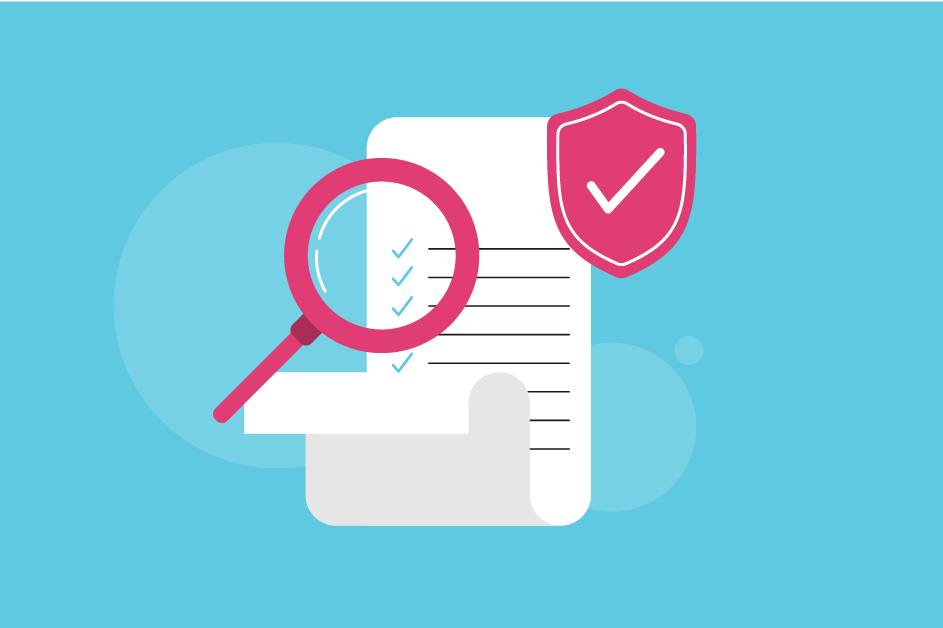In a fast-evolving digital economy, there’s no time to waste when protecting data and ensuring robust information security. In fact, did you know that a cyber attack occurs somewhere on the web every 39 seconds? So let’s cut to the chase and get to the nitty-gritty.
It’s crucial to understand that PCI DSS is a global standard, applicable to any business that processes, stores, or transmits credit card information. This includes businesses of all sizes and transaction volumes, emphasizing the universal importance of secure payment card processing.
What is PCI DSS Compliance?
First things first, let’s get this acronym figured out! PCI DSS stands for The Payment Card Industry Data Security Standard. In 2004 Visa, Mastercard, American Express, Discover and JCB created the Payment Card Industry Security Standards Council (PCI SSC) to improve the safety and security of consumer data and trust within the payment ecosystem. After that, they formed PCI DSS, a standard to determine and ensure a baseline level of protection for customer data.
Within PCI DSS, there are twelve security standards/requirements which set the minimum standard for data security. The twelve security standards revolve around the technical and operational standards businesses must follow to best secure and protect credit card data during and after purchase. It’s important to note that these standards are not only about technical measures but also encompass administrative and policy controls.
However, although straightforward in cause and objective, understanding the intricacies of PCI DSS can be daunting, challenging and complex. In fact, a business that handles card data may be required to meet up to 300+ security controls. Moreso, the official PCI DSS documentation includes over 1,800 pages. Simply put, it’s a time-consuming process.
Fortunately, you don’t need to set aside 72 hours just to read the official PCI DSS documentation – we’ve got you covered.
The three main components of PCI DSS compliance
To better understand the intricacies of PCI DSS compliance and the requirements that come along with it, it’s crucial to get a high-level overview of the three core components of PCI DSS compliance:
- Handing: How to obtain credit card data from customers and ensure that sensitive card details are collected and transmitted securely.
- Storing: Managing the secure storage of data (outlined in the 12 security domains of the PCI standard), including encryption, monitoring and security testing if access to card data.
- Validating: Validating (annually) whether the required security controls are still in place. This can include forms, vulnerability scanning services, and third-party audits.
Remember, achieving PCI DSS compliance is not a one-off task but an ongoing process that requires continuous monitoring, evaluation, and adaptation to maintain secure payment environments.
For effective validation, many businesses seek assistance from Qualified Security Assessors (QSAs), who are certified by the PCI SSC to evaluate and confirm adherence to the PCI DSS standards.
The 12 security requirements of PCI DSS compliance
According to the PCI SSC, vendors must meet all twelve requirements to maintain compliance. Although the sub-requirements are a few (hundred), understanding the 12 core security requirements will help you get a firm grasp on what is expected to reach compliance.
It is also crucial for businesses to understand the consequences of PCI DSS non-compliance. These can include substantial fines, increased transaction fees, or even the loss of the ability to process payment cards, making compliance a key priority.
1. Implement and maintain network security controls
The PCI DSS security standard requires organizations to install and maintain a hardware and software firewall. In addition, they need to adhere to strict firewall rules. Firewalls secure your organization’s network and prevent unauthorized data access. This access control measure and PCI DSS requirement also dictates how to configure your routers to best protect cardholder data within your internal network.
2. Refrain from using vendor-supplied defaults
When using third-party operating systems, they generally come with factory settings as defaults, including default usernames and passwords and other insecure configuration parameters. PCI DSS requirements clearly state that these default settings aren’t secure enough and are not accepted for PCI DSS compliance. In addition, businesses must keep an inventory of all systems and configuration procedures. These procedures must be followed when introducing a new system to your IT infrastructure.
3. Protect Stored Cardholder Data
This is one of the most significant requirements under PCI DSS compliance and stipulates strict guidelines for storing cardholder data. It specifies that data should only be stored if it is absolutely necessary. It’s the organization’s responsibility to limit storage time, purge all data quarterly and render all data unreadable.
4. Use encryption tools while transferring data
This requirement ensures the safe transfer of data across open networks. Data is often unprotected during this stage, and safeguarding it can be challenging. Therefore PCI DSS requirements stipulate that merchants must use specific encryption tools to make the data unbearable in the event of unauthorized access. Through encryption tools, merchants can hide critical data during user input and in the event of a cyber attack, mitigating the impact of the data breach.
5. Install and regularly update anti-virus software or programs
This one may seem like a no-brainer, but that doesn’t make it any less critical. Requirement five expects all businesses that deal with cardholder data to protect all their systems against malware. They must do this by implementing and frequently updating anti-virus software and programs. The antivirus software must be implemented onto all systems that malware attacks could impact. This includes all devices used on and off-premise, such as laptops, mobile, and remote devices.
6. Create and maintain secure systems and applications
The core takeaway for requirement six is that businesses must have a robust risk management strategy to identify any areas of vulnerability within their systems and applications. This risk management strategy should gauge the entire PCI DSS environment and accurately identify and classify the overall risk posed by the known security vulnerabilities.
7. Follow a need-to-know business approach when managing data access
Your access control and management protocol should follow a strict need-to-know basis. This means that only members that absolutely need access to conduct business operations should be allowed authorization to access cardholder data. This requirement clearly states that businesses should restrict access to all employees as a default. In addition, if access is granted, businesses must clearly define and record all details regarding who is given access and for what purpose. It’s also required to indicate when a user leaves the company or changes positions within the company.
8. Assign unique IDs per employee with computer access
PCI DSS compliance requirements clearly state that no passwords should be shared amongst users or groups. Each authorized user must have a unique identifier and password that meets the password strength criteria. This will ensure that all activity can be traced to specific users and times to increase safety and promote user accountability.
9. Restrict physical access to cardholder data
The ninth requirement sets out strict measures that vendors must follow to safeguard and secure the physical environment in which they accept card payments. Moreover, the physical access to where personnel handle cardholder data should have restricted access. In addition, all and any documented cardholder data must be rendered unreadable (whether paper or electronic) and secured.
10. Track and monitor the access control to network resources and cardholder data
Physical and wireless networks host a wide range of vulnerabilities. Needless to say, all systems are required to have a correct audit policy. In addition, all logs must be sent to a centralized server. These logs must then be reviewed daily (at the very least) to check for any suspicious activity. Audit trail records must meet a specific standard. Additionally, all data is expected to be time synchronized and retained for a minimum of a year.
11. Conduct regular tests on security systems and processes
Even if an organization implements due diligence, there is always a risk of exposure as new systems expose you to new vulnerabilities and threats. Requirement 11 gives a detailed and robust overview of organizations that can conduct vulnerability scans and penetration tests to gauge new and unknown exposure areas. Businesses must conduct regular security tests and implement the required security patches and upgrades to highlight and mitigate vulnerabilities proactively.
12. Implement an information security policy for all personnel
Security policies are critical for maintaining PCI DSS compliance. Your security policy is integral to your information and data security and should include everything from employee training to risk mitigation. Ensure your policies are detailed, thorough and distributed across the organization. It’s also best practice to review them annually to ensure proper risk management.
In addition to these specific requirements, a layered security approach is recommended. This means employing multiple security measures in tandem to protect against a wide range of threats, providing more robust protection than any single security measure alone.
Lastly, it’s important to recognize that PCI DSS is an evolving standard. As new payment technologies and security threats emerge, the PCI DSS is updated to address these challenges, ensuring that the standard remains relevant and effective in protecting cardholder data.
Simplify PCI DSS compliance with automation
When it comes to complicated compliance, we’re changing the game one framework at a time. That’s why PCI DSS compliance has become the newest framework to join our streamlined squad. Ready to secure payments and cardholder data with smooth PCI DSS compliance? Scytale have got you covered.











